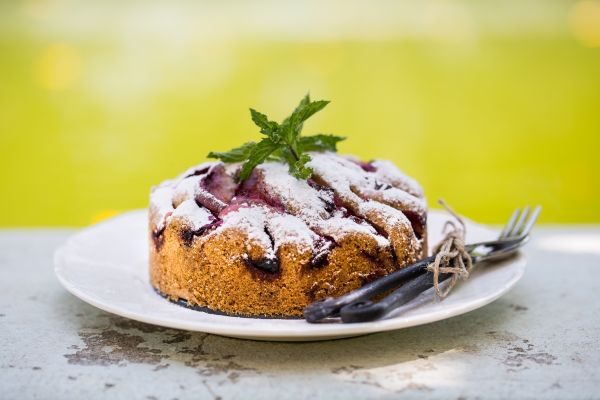Plum cake is a delectable dessert that has been enjoyed by people for centuries. The sweet, fruity cake is perfect for special occasions or just as an everyday treat. But where did this delicious dessert originate from?

What is Plum Cake?
Before delving into the history of plum cake, it’s important to understand what it is. Plum cake is a type of fruitcake that typically contains dried fruit, such as raisins, currants, and candied citrus peel.
The cake is spiced with cinnamon, nutmeg, and cloves, and often contains chopped nuts, such as almonds or walnuts. The cake is often topped with a sweet glaze or icing.
The Origins of Plum Cake
The exact origin of plum cake is unclear, but it is believed to have originated in England during the Middle Ages.
At that time, the cake was known as “plum porridge” and was made with meat, fruit, and spices. Over time, the recipe evolved and became sweeter, with the addition of dried fruit and sugar.
During the 16th and 17th centuries, plum cake became a popular dessert among the wealthy in England. The cake was often served during special occasions, such as weddings and Christmas celebrations.
The recipe continued to evolve, with the addition of new ingredients such as brandy, which was used to soak the dried fruit.
Plum Cake Around the World
Plum cake eventually spread beyond England and became popular in other parts of the world.
In Germany, the cake is known as “Stollen” and is typically served during the Christmas season. The German version of the cake often contains marzipan and is covered in powdered sugar.
In the United States, plum cake is often referred to as “fruitcake” and is a popular dessert during the holiday season. The American version of the cake often contains pecans and is soaked in rum or brandy.
Modern-Day Variations
Today, there are many variations of plum cake, with different recipes and ingredients depending on where you are in the world. Some recipes call for the use of fresh fruit, such as plums or apples, while others use dried fruit or a combination of both.
Some recipes also call for the use of alcohol, such as rum or brandy, to give the cake a rich, boozy flavor.
In recent years, there has been a growing trend towards healthier versions of plum cake. Some recipes use whole grain flour or almond flour instead of all-purpose flour, and honey or maple syrup instead of refined sugar.
FAQs
Plum cake is a type of fruitcake, but not all fruitcakes are plum cakes. Plum cake specifically refers to a cake made with dried fruit and spices, while fruitcake can refer to any cake that contains fruit.
Yes, you can use fresh fruit in plum cake. Some recipes call for the use of fresh plums or apples in addition to dried fruit.
Plum cake should be stored in an airtight container at room temperature. It will keep for several days and can also be frozen for longer storage.
No, it’s not necessary to soak the dried fruit in alcohol, but it can enhance the flavor of the cake. You can also use fruit juice or tea to soak the fruit.
Yes, you can make a vegan version of plum cake by substituting ingredients such as eggs and butter with plant-based alternatives. There are many vegan plum cake recipes available online.
Conclusion
Plum cake is a delicious dessert with a rich history. From its humble beginnings as “plum porridge” in medieval England to its modern-day variations, plum cake has evolved over time to become a beloved dessert around the world.
Whether you prefer the traditional recipe or a healthier version, there’s no denying the appeal of this sweet, fruity cake.
